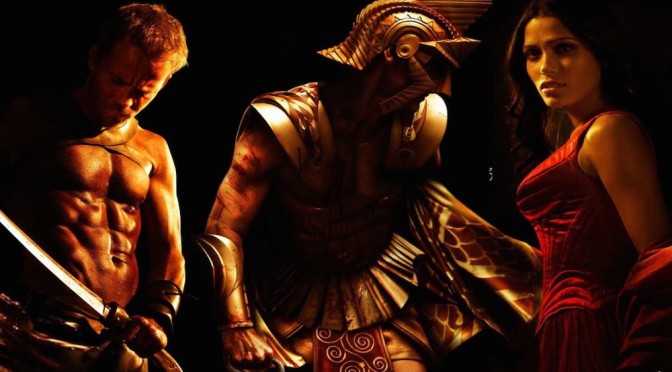The Tradition
All universal heroes battle for justice against evil. In the course of their struggle they are careful not to hurt any innocent party, indeed they often put themselves at risk in order to protect the innocent.They have the qualities the majority of the population wishes they had themselves. They behave in the way the majority of the population believes heroes should perform. That is why they are so loved and their stories are told over and over again.
Ximene is cast in that mould. She fights for justice and against oppression in the best traditions of King Arthur, Robin Hood, William Tell and d’Artagnan. She is the new Universal Hero.
King Arthur
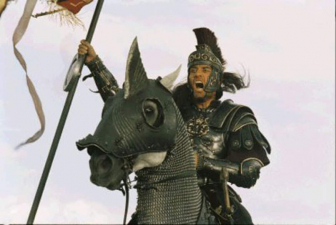 Arthur -preventing a descent into darknessSome see Arthur as a historical figure, a Roman Commander fighting to save the Roman way of life, but not necessarily the Roman Empire. More usually he is seen as shrouded in magic and myth, a product of the oral tradition of the celtic bards.
Arthur -preventing a descent into darknessSome see Arthur as a historical figure, a Roman Commander fighting to save the Roman way of life, but not necessarily the Roman Empire. More usually he is seen as shrouded in magic and myth, a product of the oral tradition of the celtic bards.
In all the different versions of Athur’s story there is one common factor. He is fighting to preserve a world he loved against the threat of chaos. For a while he is successful and recreates a haven for those who seek refuge. He brings about a return to a golden age of culture, civilisation and chivalry.
He is brought down by his human frailty and that of those who surround him. Perhaps it is that frailty rather than the dreamland of Camelot which guarantees him immortality.
Robin Hood
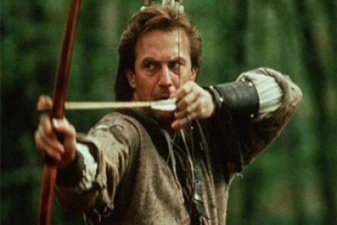 Robin Hood -Robs from the rich to give to the poorDispossessed through no fault of his own, returning to his home after fighting in support of his King, Robin Hood sees clearly the cruelty and injustice of an oppressive regime. He uses his own skill to organise and lead an opposition to protect the rights of ordinary citizens.
Robin Hood -Robs from the rich to give to the poorDispossessed through no fault of his own, returning to his home after fighting in support of his King, Robin Hood sees clearly the cruelty and injustice of an oppressive regime. He uses his own skill to organise and lead an opposition to protect the rights of ordinary citizens.
The symbol of his success is that his childhood sweetheart, Marion leaves her own comfortable life to join him in his fight. Robin was never physically clearly beaten and yet he never won either,as he was not leading a revolution, only a fight for justice.
His enemies were always able to regroup, there was always a new challenge. His struggle was ended by the ultimate human frailty, the process of ageing and death. The story of his death and how he chose his gravesite by the flight of an arrow is one of the best loved stories about him.
William Tell
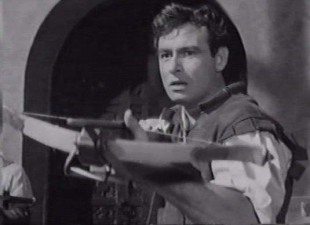 William Tell- freedom and rebellionWilliam Tell also experiences the oppression of an imposed regime.
William Tell- freedom and rebellionWilliam Tell also experiences the oppression of an imposed regime.
His initial act of rebellion is to refuse to bow to the hat of the Burgundian (or Austrian depending on the version) governor of Switzerland which had been placed on a pole in the centre of the town of Altdorf. Knowing of his reputation as an excellent shot the governor arrested William and forced him to shoot at an apple on his son’s head.
He subsequently escapes by jumping from a ship in a storm (the Tellensprung) and almost single handedly he created a sense of nationhood. By his own determination and his ability to motivate others the oppressors are driven out.
It is his ability to move under the noses of those who would dearly like to exterminate him which makes him so memorable. We would all like to be invisible for a day, so that we could right wrongs without fear of retribution.
d’Artagnan
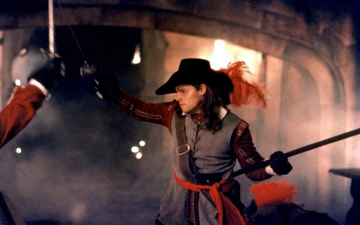 d'Artagnan-the fight against institutionalised corruptionAs a youth, D’Artagnan travels to Paris to follow in his father’s footsteps as a Kings Musketeer. He rapidly discovers that the state is dominated by the Church of Rome, who have their own army, which is in continual conflict with the musketeers.
d'Artagnan-the fight against institutionalised corruptionAs a youth, D’Artagnan travels to Paris to follow in his father’s footsteps as a Kings Musketeer. He rapidly discovers that the state is dominated by the Church of Rome, who have their own army, which is in continual conflict with the musketeers.
Though full of youthful exuberance, he accepts guidance and support from the more experienced musketeers. Their rallying cry “all for one and one for all” symbolises the essence of their fight for justice.
Despite his better judgement he falls in love with Milady de Winter. However, when he discovers she is at the very heart of state and church corruption he executes her, judging her to be beyond redemption.
In an attempt to deflect his attention away from his fight against corruption, He is offered the most senior military post in the French army. He is killed in battle before there is any chance of his standards being compromised. His death can be seen as his final escape.
And now Ximene
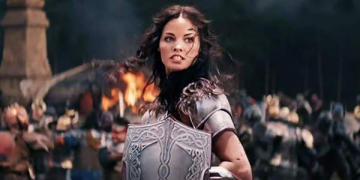 When only a baby Ximene (Sheamaine) Trencavel is called by the Pope “the most dangerous woman in the world” In the latter half of the 14th Century, she fulfils that title. She becomes a feted member of the courts of England and France, but also, operating through an intricate set of aliases, a Female Warrior and Merchant Adventurer. There are many with power and influence who plot against her, for like the other Universal Heroes she fights against injustice and is the champion of the people.
When only a baby Ximene (Sheamaine) Trencavel is called by the Pope “the most dangerous woman in the world” In the latter half of the 14th Century, she fulfils that title. She becomes a feted member of the courts of England and France, but also, operating through an intricate set of aliases, a Female Warrior and Merchant Adventurer. There are many with power and influence who plot against her, for like the other Universal Heroes she fights against injustice and is the champion of the people.
She has a love life which is equally tumultuous. Ximene is the last Cathar and Cathars believe that there is no sin in sexual pleasure, no matter how that pleasure is obtained. Sexual Pleasure is simply a gift to show us what union with the Good God can be like.
There is no simple solution which will deliver her objectives. She is endlessly tempted to compromise her standards but rejects every temptation.
